Sleeping Bear Heritage Trail: A Pedal Along a Michigan Marvel
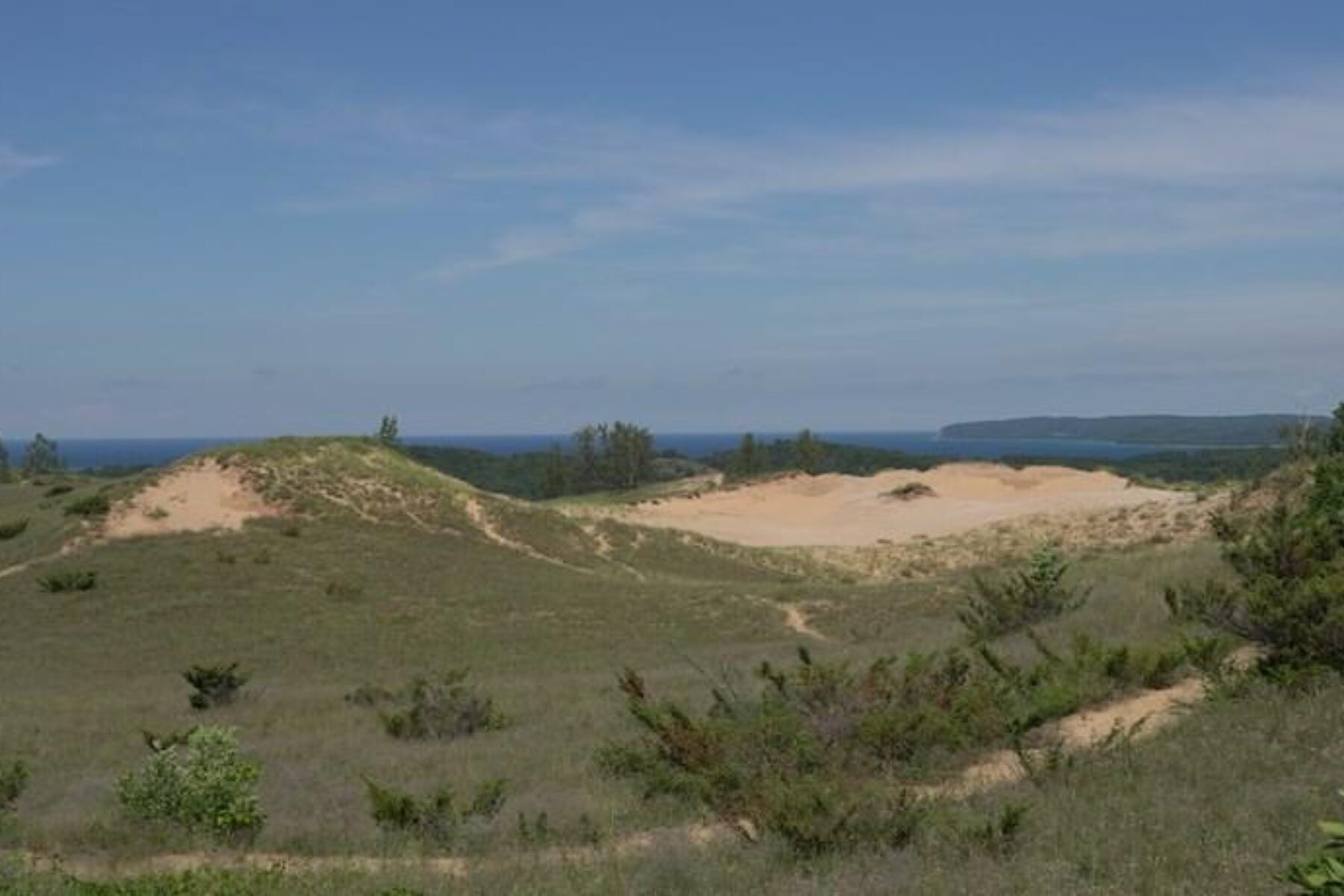
Trying to escape the pandemic blues and an oppressive Midwest heat wave, I pointed my van north, heading to Sleeping Bear Dunes National Lakeshore in northern Michigan. About 20 minutes south of Traverse City, Sleeping Bear Dunes has all the makings of a nearly perfect outdoor vacation oasis—miles upon miles of trails, beautiful scenery and a perfect spot on Lake Michigan. No wonder it was named the “Most Beautiful Place in America” by Good Morning America viewers in 2011.
Sleeping Bear Dunes had almost everything I was looking for, even one of the best rail-trails in the country. I’d heard too many great things about the 22-mile Sleeping Bear Heritage Trail over the years, and I wanted to finally ride it myself.
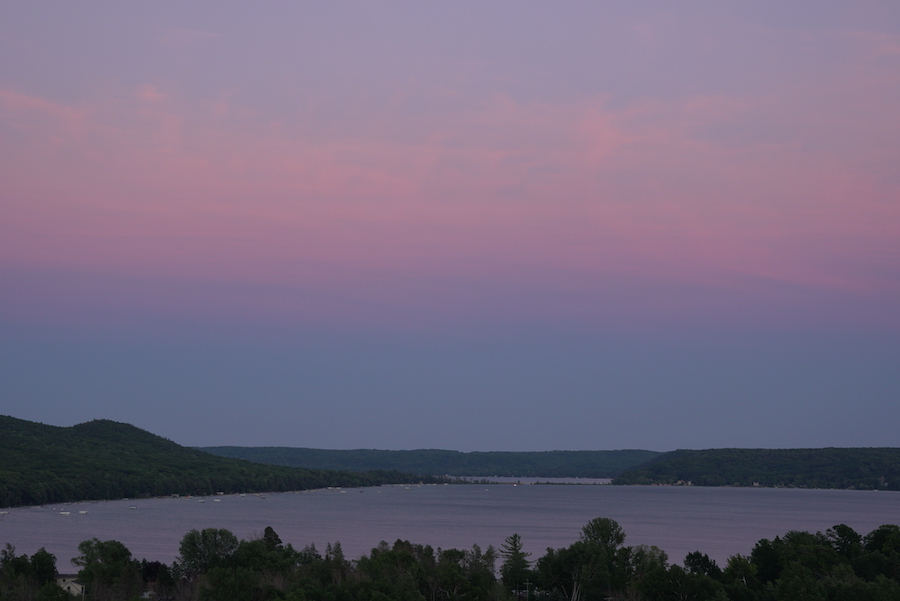
Only about 2 miles of the trail is on old railroad right-of-way, with the tracks having been used for shipping locally hewn timber more than a century ago, according to Caitlin Early, campaign and development officer for Traverse Area Recreation and Transportation Trails (better known as TART Trails). The trail technically runs from near the national lakeshore visitor center in Empire, Michigan, to the Port Oneida Rural Historic District. I started at the Bar Lake Road trailhead, a few miles from the visitor center.
After about a half-mile warm-up, riders start a 1.5-mile, nearly 200-foot uphill climb into the forest surrounding the popular Pierce Stocking Scenic Drive. The pitch ranges mostly between 2–4% for the bulk of the climb, peaking at nearly a 10% grade toward the end. Don’t panic, as it sounds worse than it actually is; most riders will be able to tackle that section with no problems.
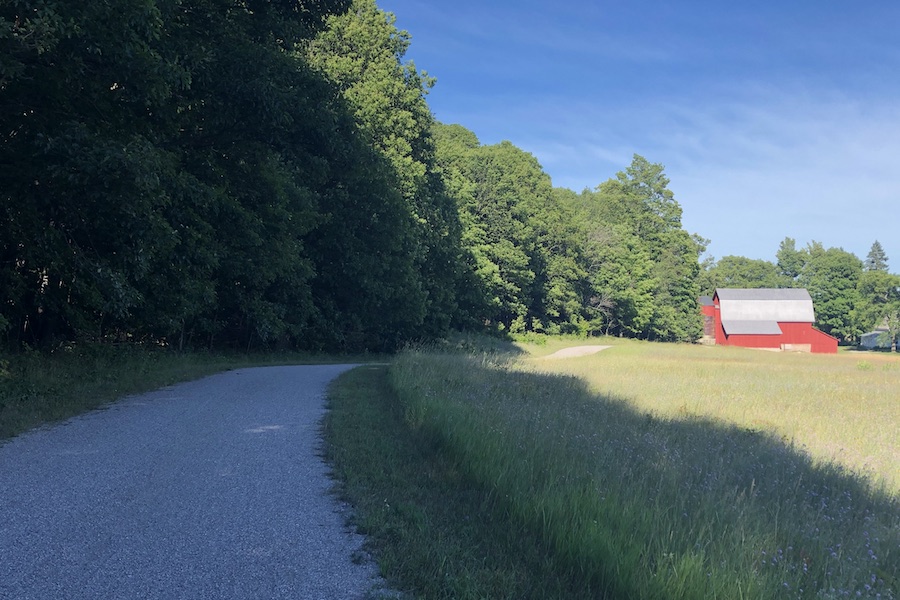
The 1-mile descent is lumpier than three-day-old oatmeal, with multiple short rises and steep plunges. I was smiling ear-to-ear until I realized I was going to have to climb back up that side to get back to my van, temporarily downgrading my facial expression to just a slight grin.
Despite visiting at the peak of summer, the northern latitude, massive tree canopy and cool breeze off Lake Michigan worked in unison to keep temperatures exceedingly pleasant. It was at least 10–15 degrees cooler than my hometown of Indianapolis, six hours south. Every time I rode through a patch of pine trees, it felt as if I were pedaling through a woodsy walk-in cooler.
As I pedaled through the DH Day Campground that sits on the trail, I could see why it’s so popular with vacationers. It’s not only the perfect basecamp for trail users, it also offers unbelievably easy access to Lake Michigan and the area’s namesake dunes. A few nights before I left on my trip, I tried to book a couple of nights in the campground, but came up empty as it’s one of the most highly sought-after camping destinations in Michigan. (Your best shot is to book at least six months in advance or hope for a day-of cancellation.)
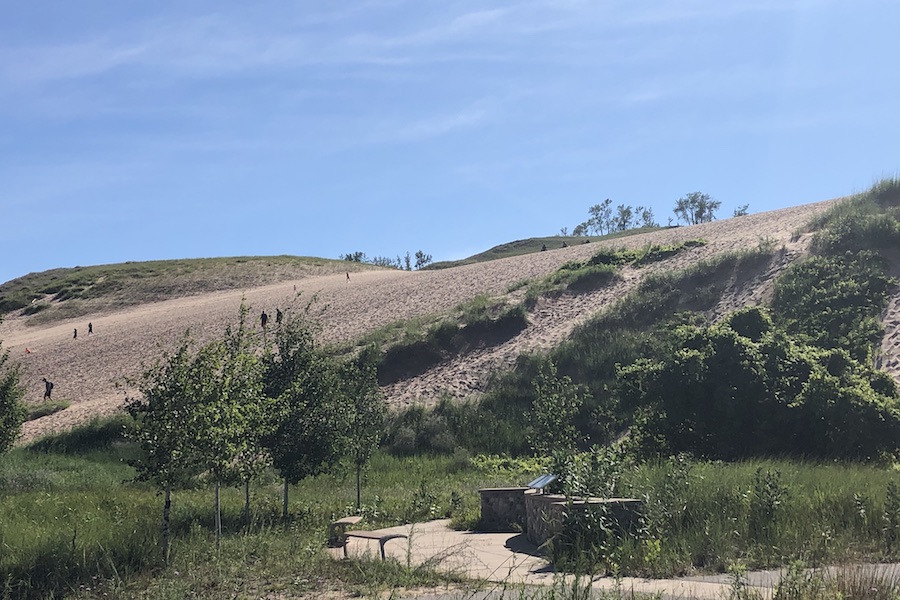
Not too far from the campground, riders pass the Dune Climb. I wouldn’t try the hike up the 460-foot sand dune in cycling shoes, but it can be a fun diversion if you have the time. The climb doesn’t appear that difficult, but as I huffed and puffed my way upward later that day, I realized that looks are often deceiving. The effort is worth it for the view of Glenn Lake at the top of the dune, particularly at sunset.
From there, things flatten out for quite a bit as the greenway ends and riders take to the roads surrounding the tourist town of Glen Arbor for a few miles.
There were plenty of other riders and walkers of all ages and abilities on the trail. Most people seemed to be riding from the campground on cruiser bikes and just pedaling a few miles to get in some exercise and experience nature. Everyone was giving plenty of room, per current social-distancing standards.
The last five miles or so of the trail goes from pavement to gravel. Luckily, my 32mm Bontrager R1tires were more than capable on the loose stuff as I pedaled toward the Port Oneida Rural Historic District, where visitors can see farmhouses more than a century old, take in old farming demonstrations and more.
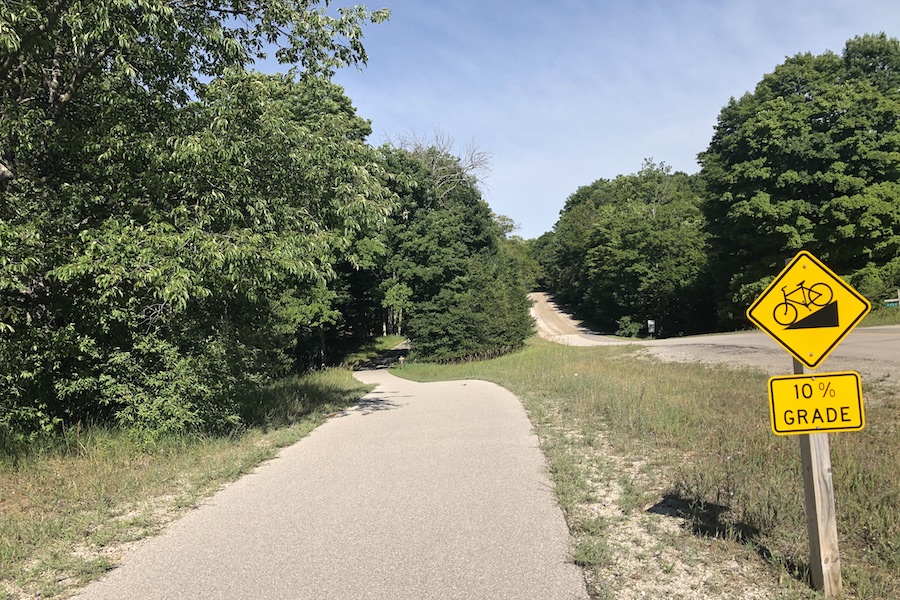
In the next three years, the trail will be expanded farther in both directions. The new northern section will end at Good Harbor Trail (County Road 651), granting access to a popular local beach, while the southern section will end at Manning Road. The new trail “will span from the iconic shoreline to a popular trailhead … winding through conifer forests and wetlands, along golden meadows and rolling dunes, and by a historic farmstead,” Early said.
All told, the total project cost, including trail already built, will be $26 million.
During my trip, I was almost entirely self-contained in my Roadtrek camper van. Nearly all of my meals were prepared over my van’s camp stove or the open flame of a campfire. But that evening, I decided to venture out, albeit safely. I managed to find one spot in Empire, Joe’s Friendly Tavern, that was free of crowds and served probably the best burger I’ve had since our semi-lockdown began. Even better, the restaurant is less than 5 miles away from the Empire Bluff trailhead (not on the Heritage Trail, unfortunately), where a 1.5-mile hike takes you to an epic view of Lake Michigan and, on a clear day, South Manitou Island.
As I sipped my Spinal Tapper double IPA at Joe’s, I was glad I made the journey north. The trail—and the Sleeping Bear Dunes area, for that matter—was as breathtaking as my friends had claimed. Although it was a great time, all things considered, I looked forward to visiting again in the not-too-distant future when there was less worry in the air.
For a detailed map and more information on the Sleeping Bear Heritage Trail, visit TrailLink.com, which catalogs more than 37,000 miles of multiuse trails in the United States.
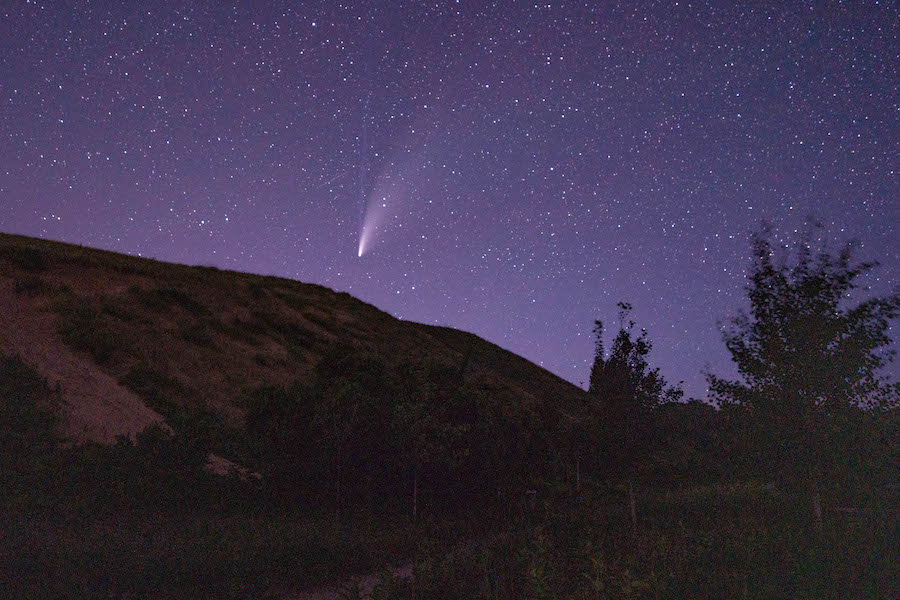

Donate
Everyone deserves access to safe ways to walk, bike, and be active outdoors.



